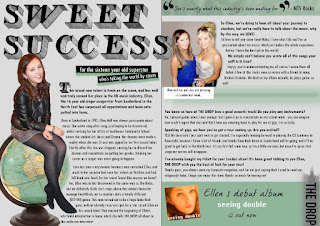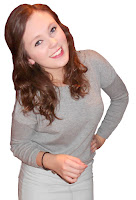This is my preliminary college magazine which I called Bede Buzz. Considering I did this at the very beginning of the year without any help from my teacher or any further knowledge of the conventions of magazines, and I'm proud of my efforts.
However, compared to my final product, my preliminary task is made to look very amateurish.
I actually really liked the cover of my preliminary college magazine, and I feel that it has certain similarities to my end product. It has two articles at the bottom of the cover, and two at the top overlapping onto the main cover image. Obviously, I used the same model for both magazines, however they have a similar costume on. The colour scheme is also similar. Although they have these similarities, it is clear that I have taken much more consideration into the layout. By studying different magazines that are already on the market, I was able to gain knowledge of certain music magazine conventions, and ensure that I included them in mine.
Looking back on the contents page of my college magazine I can see that I had very little knowledge of magazines and how they should look when I create that. It is very simple and very basic, and comparing it to the likes of NME magazine it isn't a magazine contents page at all. It is obviously that I have definitely learnt my way around magazine conventions, and what is needed and expected of a magazine in order to give the reader as much information as possible. The contents page looks professional and actually has images on, unlike my college magazine's contents page which simply has 4 pages of content listed and nothing else.
One of the most striking things that is made known by comparing my preliminary task and my final product is my widened knowledge of new technology. I created the preliminary task in Microsoft Publisher, and hadn't even considered using Photoshop as my knowledge was very limited. However now I have created a successful series of documents using Photoshop which are all consistent and have a very professional feel to them.
Overall, I feel that I have made huge progress from my preliminary task to my final product, and I have used my resources and feedback from the first task to my advantage to achieve a good final product.











































